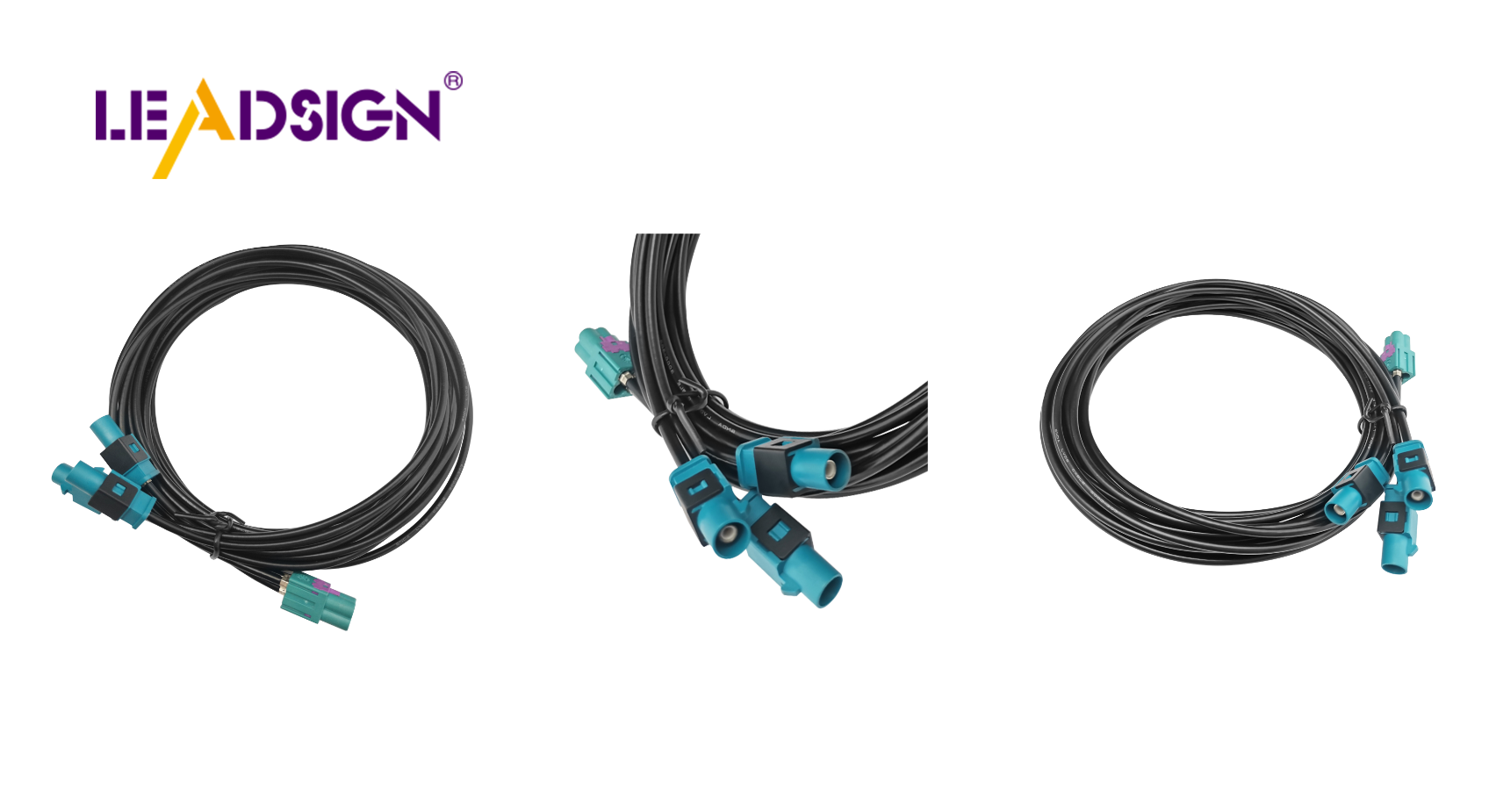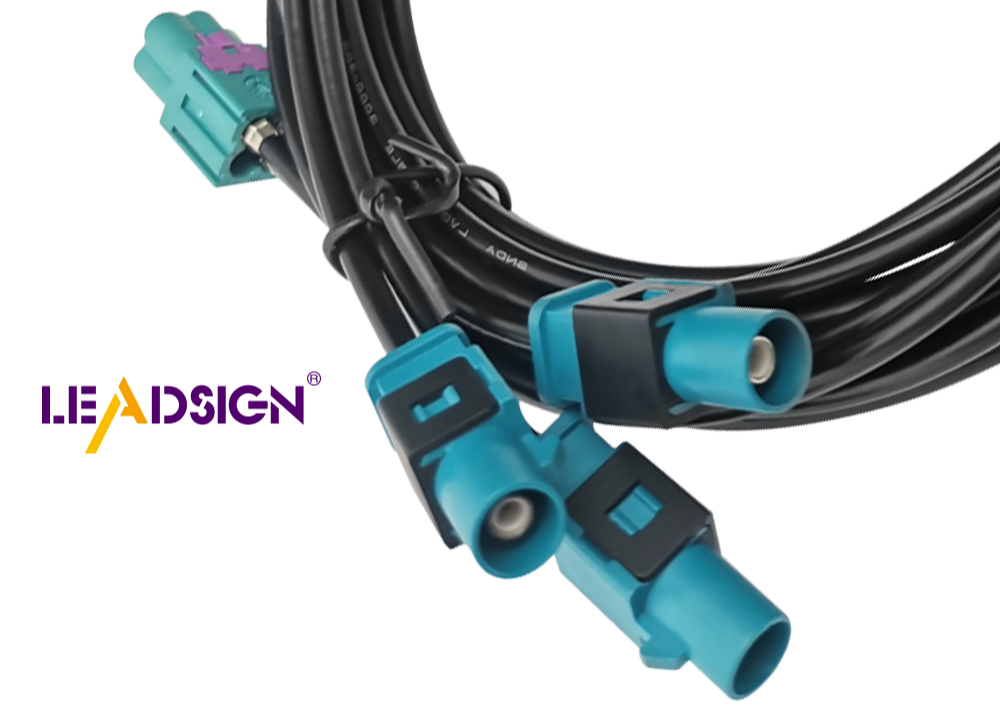Step-by-Step Guide to Car Wire Connector Types and Replacement

Understanding different car wire connector types is crucial for repairing car electronics. These connectors play a vital role in ensuring the proper functioning of your car's electrical components. By identifying and replacing connectors accurately, you enhance the safety and reliability of your vehicle. Faulty connections can lead to electrical malfunctions and significant complications. Familiarizing yourself with various connector types empowers you to maintain your car's performance and prevent costly repairs. Proficiency in recognizing and replacing connectors efficiently not only saves time and money but also preserves your car's optimal condition.
Learning About Car Wire Connector Types
When fixing car electronics, it's important to know about different wire connectors. These connectors help your car's electrical systems work well. Let's look at some common and special connectors you might see.
Common Car Wire Connectors
Butt Connectors
Butt connectors are simple and popular. They join two wires end-to-end. You put the stripped wire ends into each side of the connector and crimp them tightly. This connector is great for joining wires in a straight line.
Bullet Connectors
Bullet connectors make it easy to connect and disconnect wires quickly. They have a male and female part that snap together. You often find them in cars where you need to unplug things often.
Spade Connectors
Spade connectors, or fork connectors, help connect wires to terminal blocks or screws. Their fork shape lets you slide them under a screw or bolt, making them easy to use.
Ring Connectors
Ring connectors secure by wrapping around a bolt or screw. They're used for grounding and when you need a strong, lasting connection.
Special Connectors
Weatherproof Connectors
Weatherproof connectors can handle tough weather conditions. They're perfect for outdoor parts of your car. These often have seals to keep water out, ensuring they stay connected well.
Product Information: The Waterproof connectors come with up to 12 pins in different setups. You might need to trim insulation tabs for proper crimping.
Quick Disconnects
Quick disconnects let you separate wires fast and easily. They're used when you need to connect and disconnect parts often. These come in many sizes for different uses.
T-Tap Connectors
T-Tap connectors let you add new circuits without cutting existing wires. They're useful for adding new parts to your car's electrical system by clamping onto the wire and inserting the new one into the connector.
Knowing these wire connector types helps you choose wisely when fixing or upgrading your car’s electrical systems, keeping connections safe and efficient.
Tools and Materials Needed for Replacement
When changing car wire connectors, having the right tools is key. This makes sure everything goes smoothly and connections stay safe. Let's see what you need.
Essential Tools
Wire Strippers
Wire strippers are important for taking off wire covers without harm. Put the wire in the slot and squeeze to remove the cover. This gets the wire ready for a new connector.
Crimping Tool
A crimping tool helps attach connectors to wires tightly. It presses the connector onto the wire firmly. The Deluxe Self-Adjusting Wire Stripper Cutter Crimper can do both jobs at once. It keeps connections tight to stop electrical problems.
Heat Gun
A heat gun shrinks tubing around wires and connectors for protection. Heat makes tubing fit snugly, keeping out water and dirt. This step is vital for your car's electrical health.
Necessary Materials
Replacement Connectors
Replacement connectors come in types like butt, bullet, and spade. Picking the right one is crucial for your car's wiring system. Have different types ready to match your needs.
Heat Shrink Tubing
Heat shrink tubing adds extra safety to connections. After crimping, slide it on and use a heat gun to shrink it tight. This seals out water, great for outside parts.
Electrical Tape
Electrical tape insulates and protects wires well. Wrap it after using heat shrink tubing for more security. It stops wires from coming loose and keeps things tidy.
With these tools and materials, your car’s electrical links stay strong and work well. Knowing why each item matters helps you replace connectors confidently, keeping your car safe.
Step-by-Step Replacement Process

Changing car wire connectors needs careful steps. Follow this guide to do it right.
Preparation
Safety First
Before starting, think safety. Wear gloves and goggles to stay safe. Make sure your workspace is bright and tidy to avoid accidents.
Disconnect the Battery
Unplug the car battery to stop shocks. Find the negative terminal and use a wrench to loosen it. Take off the cable and keep it away from metal parts.
Taking Out the Old Connector
Find the Bad Connector
Check wires to spot the bad connector. Look for wear or rust. Finding the right one is key for a good fix.
Cut the Wire
After finding the bad connector, cut it off with wire cutters. Cut near the connector but leave enough wire for a new one. Make sure it's a clean cut for easy fixing.
Putting in the New Connector
Strip the Wire
Take off wire cover using strippers. Put wire in slot and squeeze handles to remove cover. Show enough wire to fit into new connector well.
Attach New Connector
Pick right connector type you need. Put stripped wires in and crimp them tight with tool. Make sure it's tight so no problems happen later.
Secure with Heat Shrink Tubing
Slide tubing over connection. Use heat gun to shrink it snugly around wire and connector. This keeps out water and dirt, making connection last longer.
By doing these steps, you can change car connectors well. Knowing types of connectors and using correct tools makes connections strong and lasting.
Testing and Finishing the Replacement
After changing the car wire connector, check if it works. This is important for your car's safety and electrical system. Follow these steps to test and finish the replacement.
Testing the Connection
Hooking Up the Battery
First, connect the car battery again. Find the negative end and attach the cable with a wrench. Make sure it's tight to avoid problems. This step gives power back to your car so you can test it.
Checking If It Works Right
Once the battery is on, turn on electrical parts of the car. See if everything works well. Look for issues like flickering lights or things not working. If there are problems, check how you put in the connector. Make sure wires are crimped tight and heat shrink tubing is used right.
Final Steps
Keeping Wires Safe
After making sure it works, keep wires safe. Use ties or clips to hold them in place so they don't move around. This helps stop damage and keeps your car's system lasting longer. A user said using right tools stops damage during this step.
Cleaning Your Space
Finally, clean where you worked. Throw away extra stuff like wire bits or old connectors. A clean space looks nice and stops dangers too. Keeping tools neat makes fixing things later easier.
By doing these steps, you make sure changing connectors goes well. Knowing about connectors and using right tools helps fix your car's electrical system better. This knowledge lets you repair confidently, keeping your car in top shape.
Now you know how to change car wire connectors well. Keeping your car's electrical parts in good shape makes it last longer. By learning about different connector types, you can stop problems before they start. If you have trouble or feel unsure, ask a professional for help. This way, your car stays in great shape, giving you safety and calm while driving.
See Also
Navigating Ford Fakra Connectors: A Comprehensive Overview
Exploring Fakra Connectors in Honda Cars: A Complete Guide
An In-Depth Look at Fakra Connectors: Fundamentals, Varieties, and Uses
Essential HSD Connectors in Automotive: An Industry Overview

